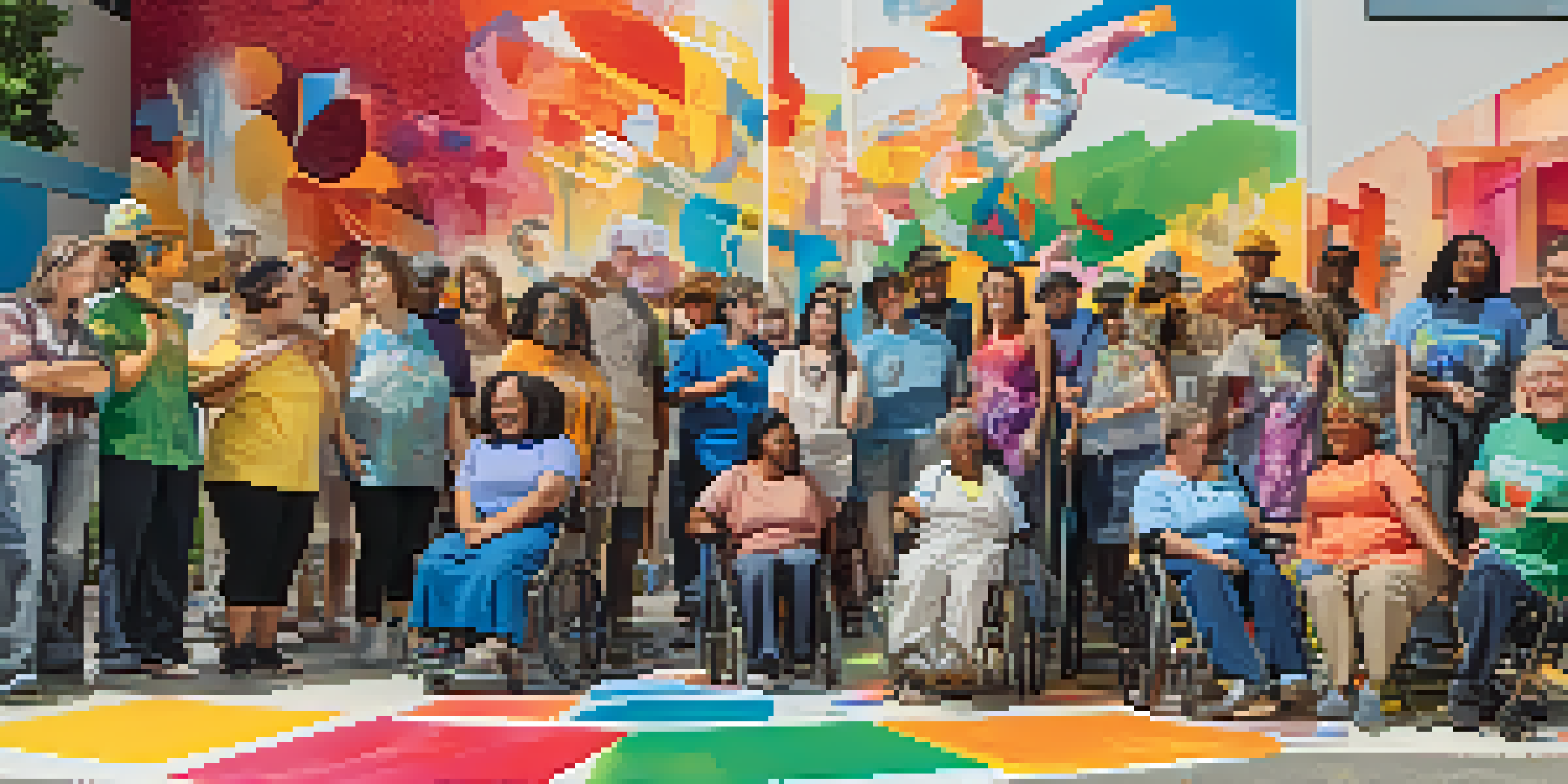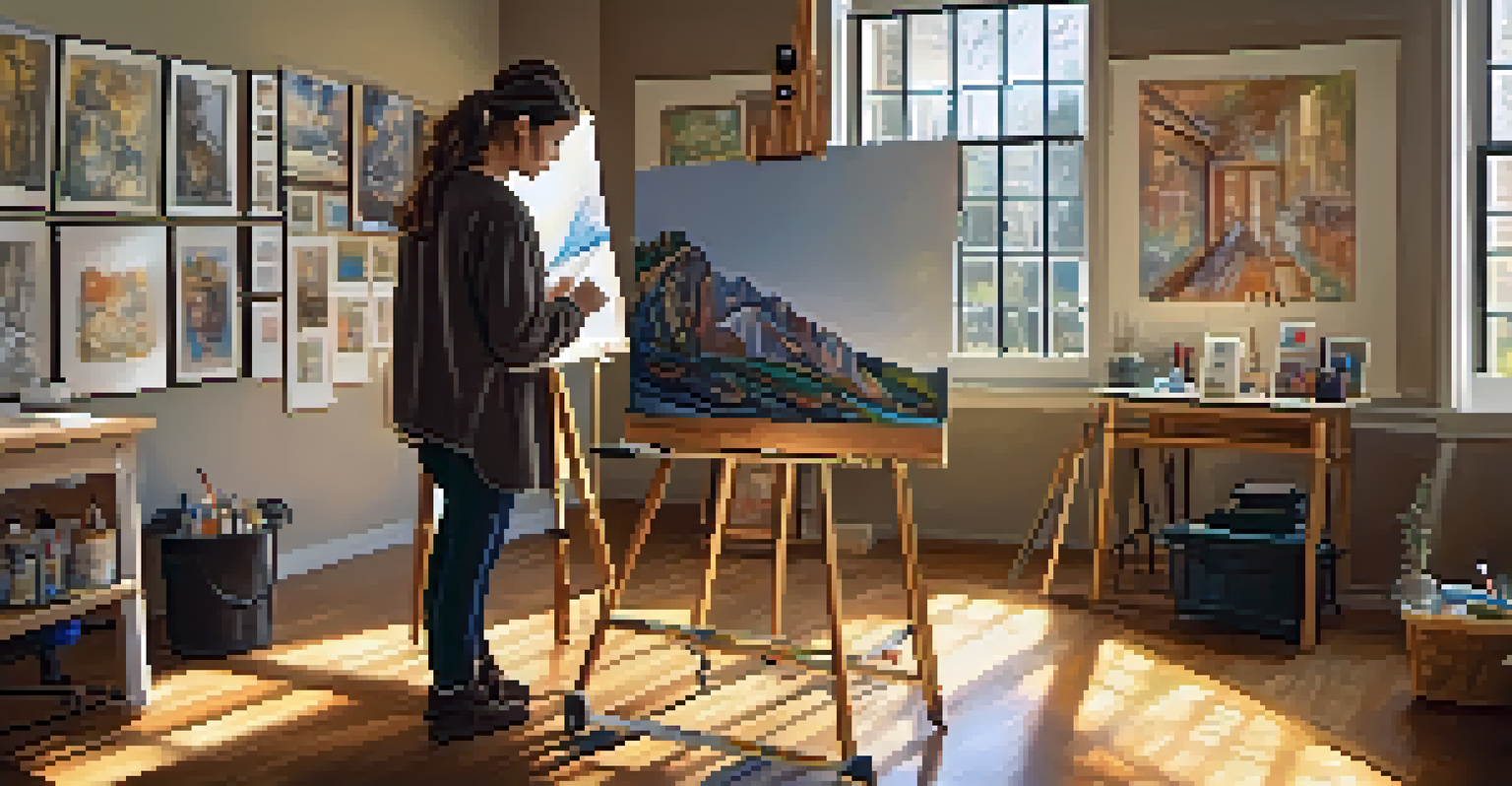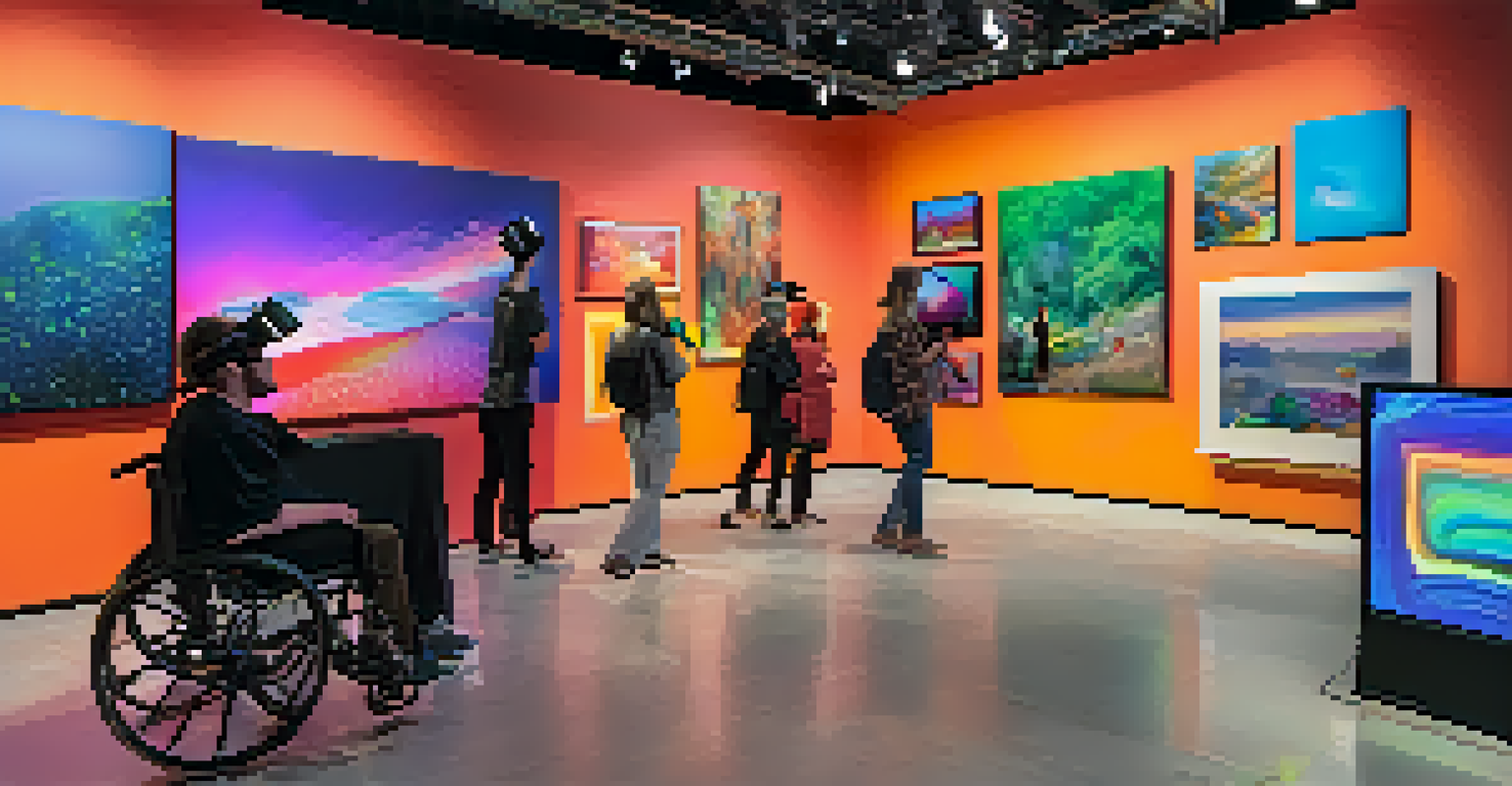Art as Expression: Breaking Barriers for Disabled Individuals

The Power of Art as a Form of Expression
Art has long been a universal language, transcending borders and cultures. For disabled individuals, it becomes a vital tool for self-expression, offering a unique way to communicate feelings and experiences that might otherwise go unheard. Whether through painting, sculpture, or performance, art allows individuals to share their inner worlds in ways that words sometimes cannot capture.
Art enables us to find ourselves and lose ourselves at the same time.
This creative outlet not only fosters personal expression but also encourages emotional healing. Many artists find that creating art helps them process their emotions, overcoming challenges related to their disabilities. In this way, art becomes not just a product but a transformative journey that promotes mental well-being.
Moreover, the act of creating art can enhance one's sense of identity. For many disabled individuals, engaging with art can affirm their experiences and validate their perspectives, leading to greater self-acceptance and empowerment.
Art as a Medium for Advocacy and Awareness
Art has the power to challenge societal norms and break down barriers. When disabled artists share their work, they often bring to light issues surrounding accessibility, representation, and inclusion. This not only raises awareness among the general public but also fosters empathy, encouraging a deeper understanding of the challenges faced by disabled individuals.

By showcasing their art, creators can advocate for change in their communities. Exhibitions, installations, and performances can serve as platforms for dialogue, sparking conversations about disability rights and the need for more inclusive spaces. This advocacy work is crucial in reshaping perceptions and dismantling stereotypes.
Art as Healing and Expression
Art serves as a powerful tool for self-expression and emotional healing for disabled individuals, allowing them to communicate experiences that words may not capture.
In this sense, art becomes a catalyst for social change. It invites everyone to participate in a collective experience, bridging gaps between different communities and promoting solidarity.
Accessibility in the Art World
One of the key challenges disabled artists face is accessibility within the art world itself. This includes everything from physical access to galleries to the availability of adaptive tools for creating art. Addressing these barriers is essential to ensure that all artists can share their voices and talents.
Every artist was first an amateur.
Organizations and institutions are increasingly recognizing the importance of accessibility. Many are implementing programs that provide funding, resources, and training for disabled artists, helping them navigate the art world more effectively. This support can be invaluable, enabling artists to focus on their creative processes rather than logistical hurdles.
Additionally, technology plays a crucial role in enhancing accessibility. Digital platforms allow artists to showcase their work online, reaching broader audiences and bypassing traditional barriers associated with physical venues.
Community and Collaboration Through Art
Art often thrives in community settings, where collaboration can lead to powerful outcomes. For disabled individuals, community art projects can provide a sense of belonging and shared purpose. This communal approach not only enhances creativity but also fosters friendships and support networks.
Collaborative art initiatives can also empower disabled individuals by showcasing their diverse talents and perspectives. When artists work together, they can inspire each other and create pieces that reflect their collective experiences, deepening the impact of their work.
Advocacy Through Artistic Voices
Disabled artists use their work to raise awareness about accessibility and inclusion, challenging societal norms and fostering empathy.
Furthermore, community art projects often engage the broader public, inviting participation and interaction. This helps to break down preconceived notions about disability while creating a space for dialogue and understanding between different groups.
The Role of Education in Artistic Expression
Education plays a vital role in nurturing artistic talent among disabled individuals. Access to art education can empower aspiring artists to develop their skills and find their unique voices. Inclusive art programs in schools and communities can foster creativity and confidence, allowing students to explore their passions.
Moreover, art education can be tailored to meet diverse needs, ensuring that all individuals, regardless of ability, can participate. This might involve adaptive techniques or specialized tools that make the creative process more accessible. By providing these resources, educators can cultivate an environment where every student feels valued.
In turn, this investment in education can lead to a richer artistic landscape, filled with diverse perspectives and stories. The more inclusive art education becomes, the more vibrant and representative the art world will be.
Celebrating Disabled Artists and Their Contributions
Highlighting the achievements of disabled artists is crucial in recognizing their contributions to the art world. Celebrating their work not only validates their experiences but also inspires others to embrace their creative journeys. Events like exhibitions and awards specifically for disabled artists shine a spotlight on their unique talents.
These celebrations can also foster a sense of pride within the disabled community. When artists see their peers being recognized, it can motivate them to pursue their passions with renewed vigor. This sense of camaraderie reinforces the idea that everyone has a place in the artistic landscape.
Importance of Accessibility
Ensuring accessibility in the art world is crucial for disabled artists to share their talents, and organizations are increasingly implementing supportive programs.
Additionally, by amplifying the voices of disabled artists, society can begin to appreciate the diverse narratives they bring. Each artist's story adds depth to the collective understanding of disability, encouraging a broader conversation about identity and inclusion.
The Future of Art and Disability
As society continues to evolve, so too does the intersection of art and disability. The future holds great potential for increased collaboration, innovation, and inclusivity. Artists and organizations are increasingly recognizing the importance of creating spaces where disabled voices are not just heard but celebrated.
Emerging technologies, such as virtual reality and digital art, offer exciting possibilities for disabled artists to explore new mediums. These advancements can help remove barriers, allowing for more diverse forms of expression and engagement. As artists embrace these tools, the art world can become even more dynamic and inclusive.

Ultimately, the future of art as an expression for disabled individuals lies in continued advocacy, education, and support. By fostering an environment where creativity knows no bounds, we can ensure that every artist has the opportunity to shine.